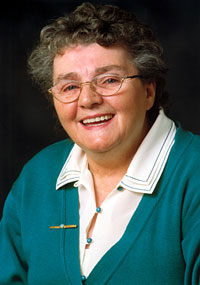17 July 2008 Edition
The Mary Nelis Column

Looking for the truth
HARDLY had the dust settled on the pile of rubble that once was McGurk’s Bar, in North Queen Street, Belfast, than the disinformation hacks at the British Army base in Lisburn were at work: the bombing was ‘an own goal’; ‘the bombers were among the 15 dead’, which included two children, three women and the wife and the 14-year-old daughter of the owner.
A compliant English media – always ready to absorb unquestionably any story from the British Army press core as the truth and nothing but the truth – presented the public with headlines that suggested that the bombing was the work of the IRA. An article in the London Times, under the headline ‘Blast that killed 15 may have been IRA error’, written by established journalist John Charters, explained that RUC and military intelligence had information that an IRA operation was planned for the North Queen Street area and that the bomb was in transit.
The other story emanating from British Army intelligence officers and carried in most of the English papers was that it might be a ‘Protestant’ bomb but the more likely theory was that the ‘Provisionals had deliberately killed their own people to provoke open rioting again’!
A witness, a young paper seller, had seen a car stop outside the pub and a man get out and plant the bomb. But when the bombing was claimed by an anonymous phone caller stating it was the work of the ‘Empire Loyalists’, the Daily Express, not to be outdone, ran a story straight out of the book of British Army fairy tales which stated that though their intelligence services were suspicious of the call, they would not rule it out as “a double bluff by republican extremists”.
Similar headlines were carried in most of the English gutter press newspapers.
The Sun, always reliable for a good anti-Irish story, confused its readers by telling them: “The security forces have no clue to the mad bombers. Was it murder by mistake?”
With the exception of The Guardian, the Fleet Street press corps accepted the British Army press statements and the much-quoted allegations of the then Stormont Minister for Home Affairs, John Taylor, that the IRA was wholly responsible.
Some seven years on, a self-confessed unionist paramilitary, Robert Campbell, admitted that he had been part of a UVF gang that carried out the attack. He refused to name the other people responsible and the story did not make the front pages of the British press. But then it’s the first story that counts and the propagandists in the British Army disinformation services knew they could rely on the blinkered Fleet Street editors to ensure that ‘good copy’ took precedence over truth and objectivity and most editors would not delve too deeply into any analysis of the British Government’s security policy in the North. McGurk’s Bar was a case in point, as was Bloody Sunday.
Thirty-seven years on, the bombing of McGurk’s Bar was raised this week in the British House of Commons by the Scottish Labour MP, Michael Connarty, whose great-uncle, Phillip Garry, was killed in the blast.
The British Government and the Secretary of State, Shaun Woodward, have apologised to the families of those killed for what they now admit was the deliberate distortion of the facts surrounding the atrocity, and for maligning the characters of the dead.
Evidence is now emerging that the bombing of McGurk’s Bar, like many atrocities in the early years of the conflict, may have been part of a policy of assassination by British intelligence services that allowed, encouraged and initiated violence, crime and terrorism to alienate and divide both communities. The truth behind the bombing of McGurk’s Bar has still to be told.


